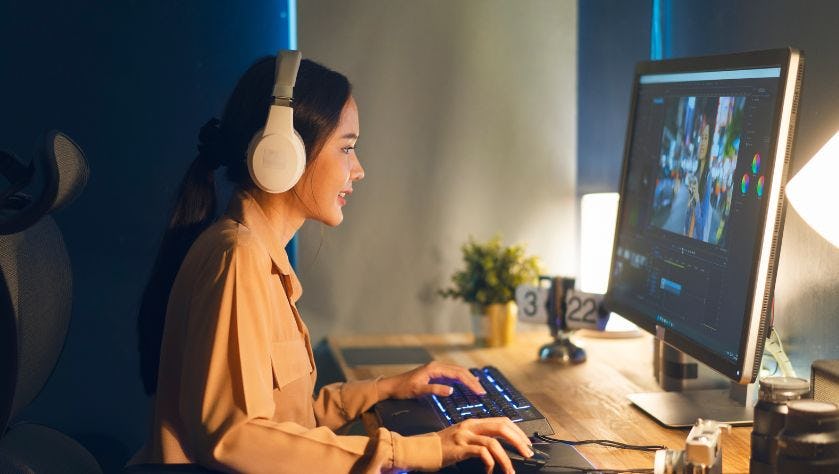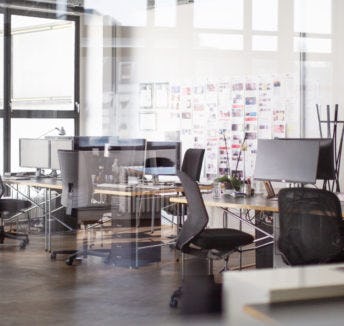
Creativity doesn’t happen by accident and it’s not something that people just have. It has to be nurtured and exercised, and it’s the job of great employers to learn how to do that.
It might not have felt like it at the time, but there were a few silver linings to our months of lockdown – one of which was an apparent surge in creativity. Researchers in France found that both psychologically and practically, people said they were more creative during the pandemic. Indeed, virtually all of us had to find new ways to work, communicate and keep ourselves occupied, meaning creativity was ‘baked in’ to how we led our lives.
In a work sense, being unable to rely on face-to-face encounters meant businesses conjured up a multitude of ways to collaborate on tasks, build bonds with new team members and maintain a thriving company culture. From utilising digital tools and emerging software to rethinking how we carried out meetings, being inventive was the name of the game.
Knowing how to continue this creativity wave is the challenge employers face now. You could say that historically, the methodology of many creative companies has primarily been based on ‘vibes’. Casual clothes, thick-rimmed glasses, bean bags, ironic nights out at crazy golf – you get the gist. But parameters have changed in the age of hybrid, with new technologies and processes obliging companies to rethink how they generate creativity.
The hybrid model
Employees love flexibility. They also love the feeling that their boss cares about them holistically, so allowing and encouraging flexibility in terms of where and when your staff work gives serious good vibes. And as discussed, good vibes equal creativity. There is more to it than that though. Changing up your working location has the benefit of segmenting your week into a series of chapters.
Work from home days, early in the week, are about getting your head down and preparing some ideas. You then discuss and expand these ideas during your days at the company HQ or local flexspace, and your Friday from home (because everyone seemingly wants to work from home on a Friday) is the day to act on the activities of the week. Hybrid sounds like, and indeed is, a flexible, person-centric approach, but it also creates a natural formality that can streamline working practices.
Cameras on please
In-office meetings often go like this: the boss speaks (for a bit longer than necessary), a few confident people speak, slightly quieter people (usually lower down the pay scale) try to add something and then get talked over, and some people hide altogether. Running a brilliant and structured video meeting can avoid this by creating a level playing field when it comes to sharing ideas – and listening to them. And creativity is all about ideas.
The Harvard Business Review suggests assigning a facilitator on video calls to manage timing and the different voices. They can introduce the rules of the meeting – raise a virtual hand before you speak, for example, and if you’re not speaking, stay muted. They can also keep an eye on comment bars and bring forward any relevant written ideas. Quieter people often feel more confident using written comments and then being called on directly to speak. How does this link to creativity? It’s about bringing more voices in, and more ideas into the pot. It takes away room for ego, or jostling for favour, and just makes space for progress.
Enjoy the togetherness
With hybrid working, the role of the office has to change. Employers can enhance moments of togetherness by creating spaces and schedules that are tailored to their surroundings and the people present, whether it’s at the company HQ or local flexspaces. This can be done by using specific zones – big tables for group meetings, smaller spaces for one-to-ones, standing areas are also great for keeping meetings succinct when needed. Share lunches, grab a coffee, do whatever it takes to facilitate creative conversations.
We have written before about the creative muscle, and as an employer embracing creativity and providing regular moments to focus on it. These actions energise staff and send a clear message about expectations. In-office events, such as networking lunches or inspirational speakers can help to stir new ideas, even more so if your office is comprised of people from different companies, like so many coworking spaces are. Variety is refreshing.
Be actively diverse
And on that note, employers need to recognise the benefits of having a diverse workforce across all levels of seniority in the company. A survey by BCG of employees at more than 1,700 companies in eight countries, showed a correlation between the diversity of management teams and overall innovation. Companies with above-average diversity on their management teams reported innovation revenue that was 19 percentage points higher than that of companies with below-average leadership diversity.
So, if we try to sum up all of these points in a very simplified nutshell, it’s that embracing difference – whether it’s in people, working practices, or physical working spaces – is healthy. It curbs boredom, challenges set notions, and flexes everyone’s creative muscles.
If you are open to new ways of working that drive your business’s creativity, check out how Spaces can inspire, stimulate and connect creative talent.
Share this article
 Read now Happy Friday: Are offices emptying a day early?
Read now Happy Friday: Are offices emptying a day early?
 Read now City, suburbs or seaside: Where can you find your creative community?
Read now City, suburbs or seaside: Where can you find your creative community?